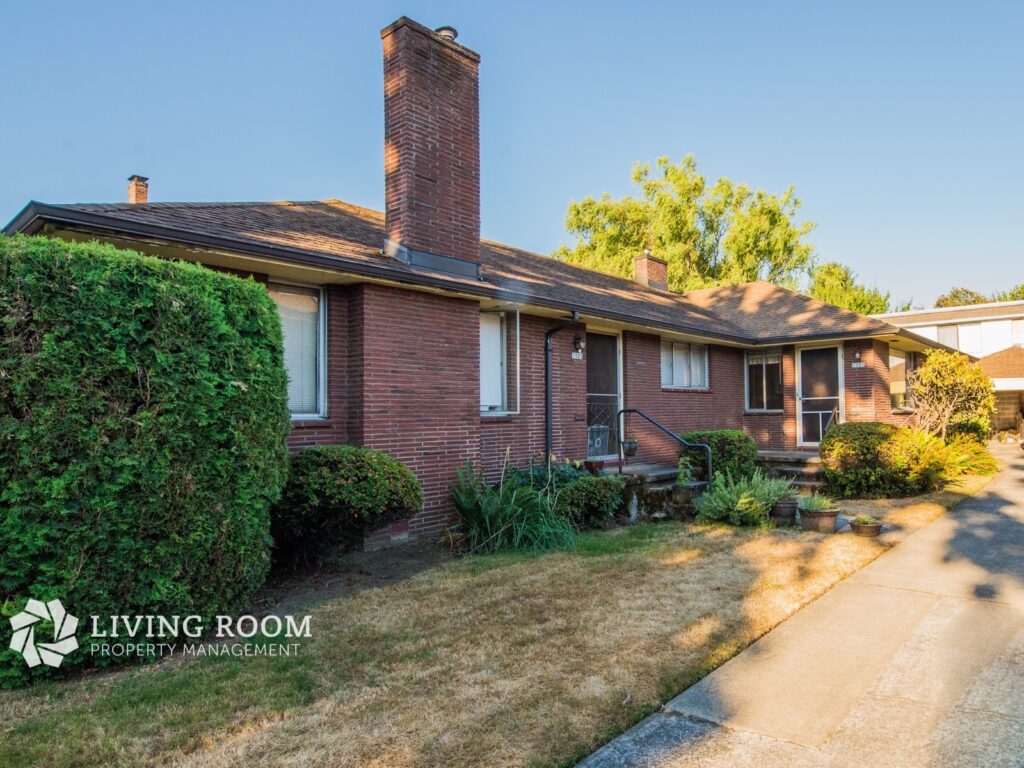Fall 2025 – A Season for Steady Strategy
As we move into fall, the rental market across Oregon and Washington is showing signs of stabilization. Rent trends are steady, tenant behavior is cautious, and owners who focus on quality maintenance and consistency are reaping the rewards.
Before we dive in, note that the data below is based on Living Room’s portfolio, not the entire Portland market. However, we’ve also included Altos Research data for context on citywide rental trends.
Rent Increase Caps for 2026
The new rent increase caps have been released for 2026: 9.5% in Oregon (down slightly from 9.9% in 2025) and 9.683% in Washington State (previously 10%). These modest adjustments reflect a cooling but balanced economic climate—enough room for landlords to account for inflation, while keeping increases within reason for tenants navigating tight budgets.
Market Performance: What’s Moving and What’s Not
Across Living Room’s portfolio, homes overall averaged 25 days on the market in September. The story shifts when you separate by property type:
- Single-family homes were the clear winners, leasing in just 7 days on average.
- Condos and townhomes struggled, averaging 48 days on market.
Pricing followed the same divide. Detached homes maintained rent levels, while attached homes (condos and townhomes) saw an average 2% dip. To keep things moving, rent concessions—ranging from $500 to one month’s rent—helped fill slower-moving listings.
To put this in perspective, Altos Research reports that single-family homes across the full city of Portland are currently renting for an average of $2,650, down roughly $100 from this time last year. Condos citywide are averaging $1,550, compared to $1,750 in 2024. The citywide numbers echo what we’re seeing in our portfolio: a stable, slightly softened market with consistent interest for well-priced, well-maintained homes.
Renewals and Retention: Playing the Long Game
Owners and tenants alike are taking a cautious approach. In September, about 50% of renewals shifted to month-to-month terms—a signal that both parties value flexibility in uncertain financial times. This isn’t a sign of instability; it’s a reflection of pragmatism. When turnover costs and potential vacancy are considered, steady rent from a good tenant often outperforms the risk of chasing a higher rent and sitting empty for weeks.
Maintenance: The Deciding Factor in Vacancy
Our maintenance team has one clear takeaway this month: homes that were prepped well during turnover leased faster and cleaner. Those that delayed “optional” repairs often saw the same items requested by applicants later—sometimes postponing move-in dates or causing missed opportunities.
Our team does its best to manage an owner’s budget by focusing first on habitability-required items, while letting owners opt in or out of “suggested” repairs. Trusting the team to choose projects carefully—even when not legally required—can make all the difference to a prospect walking through an unfurnished home. Sometimes, a full paint instead of a touch-up, repainting the front door, freshly staining the porch, or resurfacing a tired bathtub are small, high-impact updates that create strong first impressions and shorten vacancy times.
It’s also worth noting that tenants are paying close attention. Prospective renters tour multiple homes in a day, and they’ll often pick apart the condition of each one. We see it in reviews, and we hear it across the property management industry: renters think they can look past dust or wear—but they don’t. Some owners find it frustrating that we won’t list a home until it truly shows well, but that standard protects your investment. The odds of attracting a strong applicant are highest while the listing is fresh, and we don’t want to lose that early momentum. Plus, presentation impacts reputation. Renters will bypass a great home if the property management company’s name carries a poor impression. To attract the best tenants, we have to show up with our A-game—every time.
And if we ever need a reminder of why this matters, we got one recently: we allowed tours to begin while final touches were still underway, and sure enough, a 1-star review followed, sharing photos of the blue tape used to communicate with a vendor against our shiny and bright marketing photos. Even though the home turned out beautifully, that early impression stuck. It was a good reminder to stick to our own rule: no tours until the home is truly ready.

Taking care of these details during turnover not only prevents delays but also shows future tenants that the home is well cared for and ready to be lived in.
The Bottom Line
The market is leveling out, not slowing down. Owners who embrace proactive maintenance, steady rent growth, and relationship-driven management will continue to see the best results. The right balance of strategy and consistency will help protect your investment while keeping quality tenants in place—just as it should.
At Living Room Property Management, our goal remains simple: make room for you to live.
From the desk of Coty Thurman, President and Managing Broker
